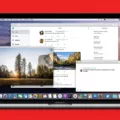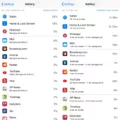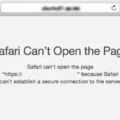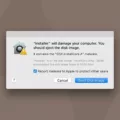Are you a Mac user who’s experienced the frustration of seeing your Safari browser or Safari Web Content quit unexpectedly? We know how annoying this can be, but don’t worry—we’re here to help! In this blog post, we’ll cover some ways you can troubleshoot and resolve the issue.
When Safari or Safari Web Content quits unexpectedly, it may be due to a variety of reasons. One possible cause is that your Mac is running out of memory. Another may be that an extension or plugin installed on your system is causing issues. Finally, it could be that there are corrupted files in your system.
To troubleshoot this issue, here are some things you can try:
1. Check Your Memory Usage: Monitor how much memory your Mac is using by opening Activity Monitor (located in your Applications/Utilities folder). If you see that the Memory Pressure chart is consistently reaching the red line (which indicates high use), then that means your Mac may simply need more RAM. Adding more RAM will help alleviate the problem.
2. Disable Extensions & Plugins: Third-party extensions and plugins can sometimes interfere with normal operations on your Mac. To disable them temporarily while you troubleshoot, open up Safari > Preferences > Extensions and uncheck all of them. You can also disable plugins by going to Safari > Preferences > Security and unchecking Enable Plug-ins for websites I visit.
3. Clear System Caches: Corrupted system caches can cause various issues on your Mac, including unexpected quits from applications like Safari. To clear them out, open up Finder > Go > Go To folder and type in /Library/Caches/. Then delete all of the contents inside this directory (but make sure not to delete any system files!). You can also try using a third-party utility such as CleanMyMac to automate this process for you if you don’t feel comfortable manually deleting files from the computer’s directory tree.
4. Check For Updates: It could also be that an update was released recently which helps fix any issues related to Safari quitting unexpectedly on Mac OS X systems like yours—so make sure you check for updates in App Store or Software Update (located in System Preferences).
Hopefully one of these tips helped solve the issue for you! If not, then try contacting Apple Support as they may have additional advice specific to your particular case. Thanks for reading—and good luck!
Troubleshooting Safari Quitting Unexpectedly
Safari may quit unexpectedly due to several different factors. It could be caused by a memory leak, a bug in the software, or other conflicts with other applications or extensions you have running. It could also be because you have too many tabs open and your system doesn’t have enough resources to handle them all. Additionally, if you haven’t updated Safari to the latest version, it may not be compatible with certain websites or plugins, which could cause it to crash as well. To reduce the chances of Safari quitting unexpectedly, make sure you’re running the latest version of the software and close out any tabs or applications that are hogging up memory or causing conflicts.

Source: apple.com
Troubleshooting Safari Not Loading Web Pages
If Safari is having difficulty loading web pages, there are a few steps you can take to try and fix the issue.
First, try reloading the page. To do this, choose View > Reload Page, or press Command-R. If that doesn’t help, check for any extensions you may have installed recently in Safari and make sure they aren’t causing an issue. You can also check your Safari settings to ensure they are set up correctly.
Next, test with a private window to see if that works better than your regular window. It’s possible that using a private window will help prevent any issues caused by caching or other website data stored on your device.
You should also make sure all of your software is up-to-date. This includes any security software or VPNs you may have installed on your device as well as making sure you are running the latest version of iOS or macOS on your device.
Finally, try checking your network settings to ensure they are configured correctly and that there isn’t an issue with the connection itself. Additionally, if there are any other issues on the device that could be causing the problem with Safari loading web pages, it might be helpful to try resolving these issues first before attempting to troubleshoot Safari again.
Fixing a Corrupted Safari
To fix a corrupted Safari, you’ll want to first ensure that your internet connection is working properly. If everything looks good on the network side of things, force quit Safari and restart your Mac. Next, try clearing out the website data in Safari by going to Settings > Safari > Advanced > Website Data and clicking “Remove All Website Data”. You can also try disabling any extensions you have running in Safari as they can sometimes interfere with the browser’s functioning. Additionally, you may want to clean up the corrupted Safari PLIST files and database – these are found in Library/Safari/ folder. Finally, if all else fails, terminate any processes that may be affecting Safari from running properly and update the app to its latest version.
Troubleshooting Issues with Safari Not Opening Certain Websites
There are several possible explanations for why some websites are not opening in Safari. It could be a problem with the website itself, or it could be due to a conflict between Safari and another program running on your computer. It’s also possible that there is an issue with your internet connection, or that your browser’s caches and site data have become corrupted. To remedy this issue, you can try emptying the browser caches and site data by going to “Safari” in the menu bar > Preferences > Privacy > Remove all website data, and confirming that you want to remove website data. If this doesn’t work, you may need to diagnose the root cause of the issue further.
Preventing Safari from Quitting
1. Open System Preferences, select Keyboard and click on the Shortcuts tab.
2. Select App Shortcuts from the list of options on the left-hand side.
3. Click the + button to add a new shortcut.
4. Select Safari in the Application dropdown menu.
5. Enter “Quit” as the Menu Title, then type “??Q” in the Keyboard Shortcut box, replacing? Q with ?? Q as specified above.
6. Click Add to register your changes and save them to your computer’s settings.
7. To create a script to show a Quit confirmation alert when? Q is pressed, open Automator, and create a new document of type Service with text input set to none and output set to no action in any application.
8. In Actions, search for “Run AppleScript” and double-click it to add it as an action step in your workflow.
9. Copy and paste this code into the text area:
on run {input, parameters}
tell application “System Events”
activate
display dialog “Do you really want to quit Safari?” buttons {“Cancel”, “Quit”} default button 2 with the title “Quit Safari?” with icon caution
if result = {button returned:”Quit”} then tell application “Safari” to quit
end tell
return input
end run
10 Finally, save your service with a name like “Show Quit Confirmation Alert for Safari” and close the Automator window when you are done. You should now be able to quit Safari by pressing ?? Q instead of? Q without triggering an unwanted Quit command accidentally!
Clearing Cache on Safari
To clear your cache on Safari, start by opening the Safari app. Then, select the ‘Preferences’ option from the menu bar at the top of the screen. Next, select ‘Advanced’ and then check the box beside ‘Show Develop menu in the menu bar’. This will enable a new menu item called ‘Develop’. Select it and then choose ‘Empty Caches’ to clear your entire cache. You can also use this menu to clear individual items from your cache if needed.
Restoring Safari to Its Default Settings
To get your Safari back to its normal state, you can reset it by following these steps: In the Safari menu, select ‘Preferences…’ Click the ‘Privacy’ button at the top of the window that appears and then click the ‘Remove All Website Data’ button. You will be prompted to confirm that you want to remove all data stored by websites on your computer. Once you have done so, all of your Safari settings will be reset and it will be back to its original state.
Troubleshooting Blank Pages on Safari
When a website appears blank on Safari, it is typically because of private browsing being enabled. Private browsing is a feature in Safari that prevents websites from storing information about your browsing activity. This means that any cookies and website data will not be saved, and the website will appear blank. Additionally, some websites may not work properly when private browsing is enabled as they require certain information to be stored in order for them to function correctly. To fix this issue, you should disable private browsing by going to the Settings > Safari menu and unchecking the box beside “Private Browsing”.
Conclusion
In conclusion, Safari is a great browser for Mac and iOS devices. It is fast, secure, and efficient and uses less memory than other popular browsers. However, if too many tabs are open at the same time, it can cause the CPU to strain and the browser to crash. To resolve this issue, you can reload pages, check Safari extensions and settings, test with a private window, install software updates, check VPN or other security software, check network settings, and resolve any other issues. Additionally, clearing the browser caches and site data can often remedy any issues that arise from using Safari.








